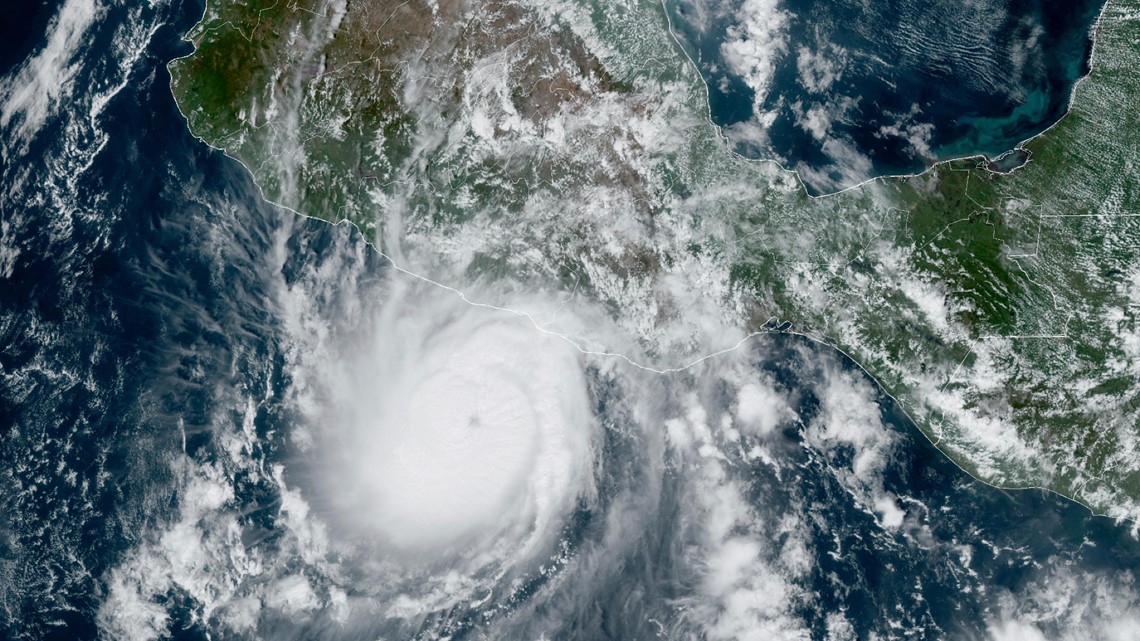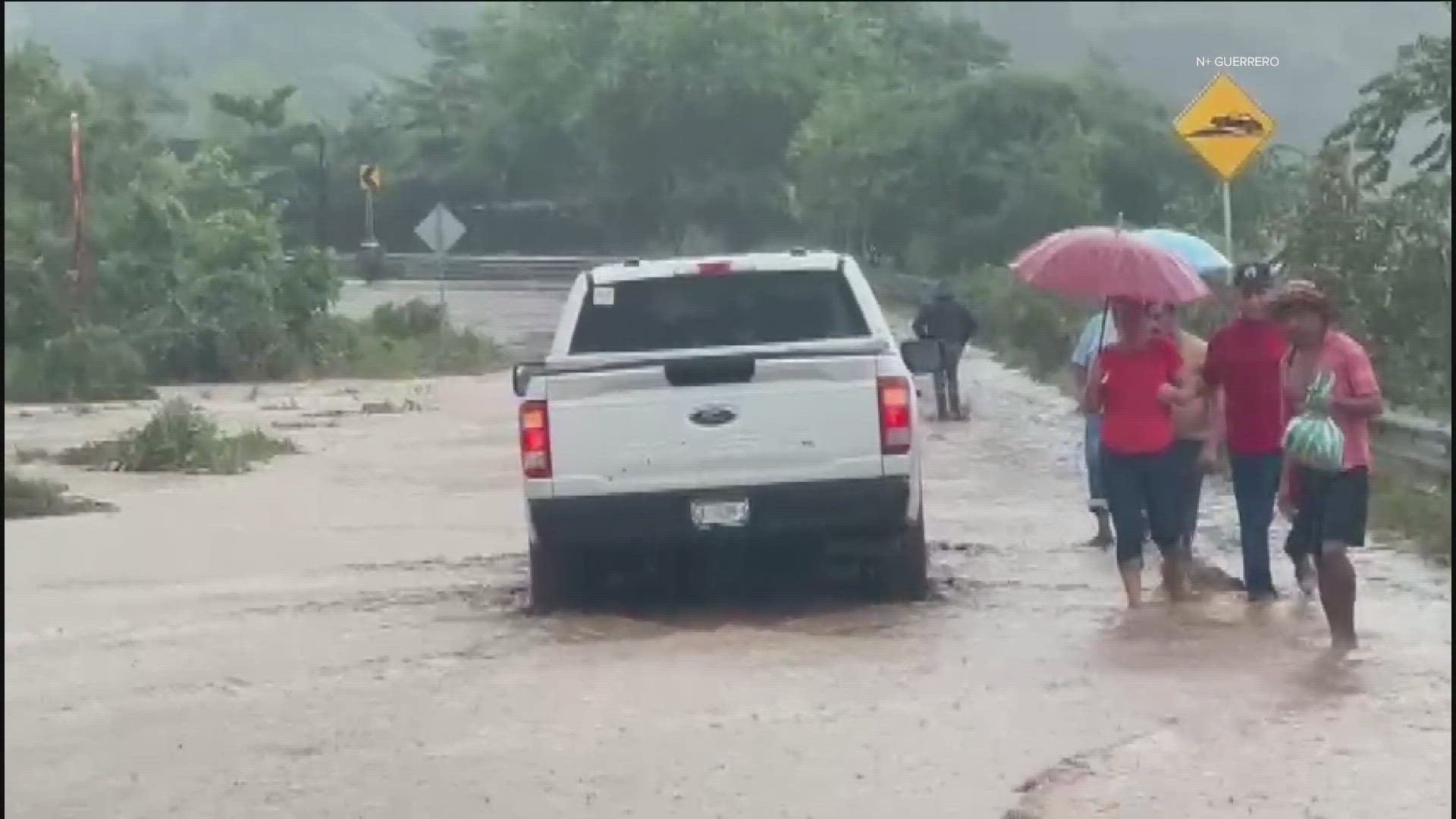ACAPULCO, Guerrero — Hurricane Otis ripped across Mexico’s southern Pacific coast as a powerful Category 5 storm early Wednesday, tearing through buildings in the resort city of Acapulco, sending sheets of earth down steep mountainsides and leaving large swaths of the southwestern state of Guerrero without power or cellphone service.
While little is known about possible deaths or the full extent of the damage — the main highway into Acapulco was impassable — experts are calling Otis the strongest storm in history to make landfall along the Eastern Pacific Coast.
By late Wednesday afternoon, Otis had weakened to below tropical depression strength and was dissipating over the mountains, yet many on the coast were left reeling.
Flor Campos had been trudging through mud for more than an hour along a highway outside Acapulco on Wednesday morning before she peeled off her shoes, worried she'd lose them in the muck.
The domestic worker from a small town in Guerrero was among dozens of families, women and children who clambered over tree trunks and other debris left by landslides in the mountainous terrain. It was a daunting escape, but people were desperate to get out.
“We had been waiting since 3 in the morning to get out, so we decided to walk. It was more dangerous to stay. There are trees knocked down, power lines down,” Campos said.


On Tuesday, Otis took many by surprise when it rapidly strengthened from a tropical storm to a powerful Category 5 as it tore along the coast. Researchers tracking the storm told The Associated Press that the storm broke records for how quickly it intensified, at a time when climate change has exacerbated devastating weather events like this one.
“It’s one thing to have a Category 5 hurricane make landfall somewhere when you’re expecting it or expecting a strong hurricane, but to have it happen when you’re not expecting anything to happen is truly a nightmare,” said Brian McNoldy, a hurricane researcher at the University of Miami.
Acapulco, Tecpan and other towns along the Costa Grande in Guerrero were hit hard, said Mexican President Andrés Manuel López Obrador. He said conditions were so bad that communication with the area had been “completely lost."
By late Wednesday afternoon, Otis' winds had dropped to 35 mph (56 kph) as the storm dissipated over the mountains of southern Mexico. Remnants of the storm were still expected to dump heavy rains on the area through Thursday, however, with the possibility of flash flooding and, in mountainous areas, mudslides, the National Hurricane Center in Miami said.
Campos and others in Guerrero were shocked by the extent of the damage Otis had wrought during its brief visit.
“There are children back there, 2 or 3 years old, with no water, nothing,” Campos said.
Photos and video shared by Mexican news outlets from Acapulco after dawn showed the walls of buildings ripped off, flooded hotel rooms with collapsed ceilings, and rubble and downed trees lining the streets.
Acapulco is a city of nearly 1 million people at the foot of steep mountains. Luxury homes and slums alike cover the city’s hillsides with views of the glistening Pacific. Once drawing Hollywood stars for its nightlife, sport fishing and cliff diving shows, Acapulco has in more recent years fallen victim to competing organized crime groups that have sunk the city into violence, driving many international tourists to the Caribbean waters of Cancun and the Riviera Maya or beaches farther down the Pacific coast in the state of Oaxaca.
Between the internationally known resorts of Acapulco and Zihuatanejo are two dozen small towns and villages.


On the outskirts of Acapulco on Wednesday, highway workers looked on helplessly without the heavy machinery needed to clear debris from the roadway. They warned the road could give way at any time because of the rain-softened ground beneath. Bridges in some areas had collapsed, and trees leaned almost horizontally across the highway, not because they were uprooted, but because the earth they grew on had slid down the slope.
Damage to the local military airport made it hard for authorities to access the region, López Obrador said. He said high-ranking members of his government would travel to Guerrero to help.
A long convoy of trucks from the national electric company moved through the Guerrero state capital, Chilpancingo, toward Acapulco before dawn Wednesday. Officials in Guerrero said on Wednesday afternoon that they were working to restore phone service.
Otis is stronger than Hurricane Pauline, which hit Acapulco in 1997, López Obrador said. Pauline destroyed swaths of the city and killed more than 200 people. Hundreds of others were injured in flooding and mudslides. Otis’ arrival came just days after Hurricane Norma struck the southern tip of Mexico’s Baja California Peninsula to the north.
While many were caught by surprise, Acapulco still was able to open two dozen shelters in the hours before Otis made landfall.
Videos from hotel guests in Acapulco posted to X, formerly known as Twitter, as the storm came ashore showed blinding horizontal rain and howling winds.
In one, white towels danced high above a hotel’s cavernous courtyard like sheets of paper and bed mattresses trembled on balconies, apparently put there to blunt the storm’s winds. Another showed wind and rain howling unimpeded down hotel hallways. In still another, a family huddled inside a hotel room shower to escape breaking windows and fierce wind.
In the Atlantic, Hurricane Tammy moved northeast over open water with winds of 105 mph (165 kph) after sweeping through the Lesser Antilles over the weekend. Tammy was about 515 miles (825 kilometers) southeast of Bermuda, and was moving northeast at about 13 mph (20 kph). The storm was expected to become a powerful extratropical cyclone by Thursday, according to the U.S. National Hurricane Center.

